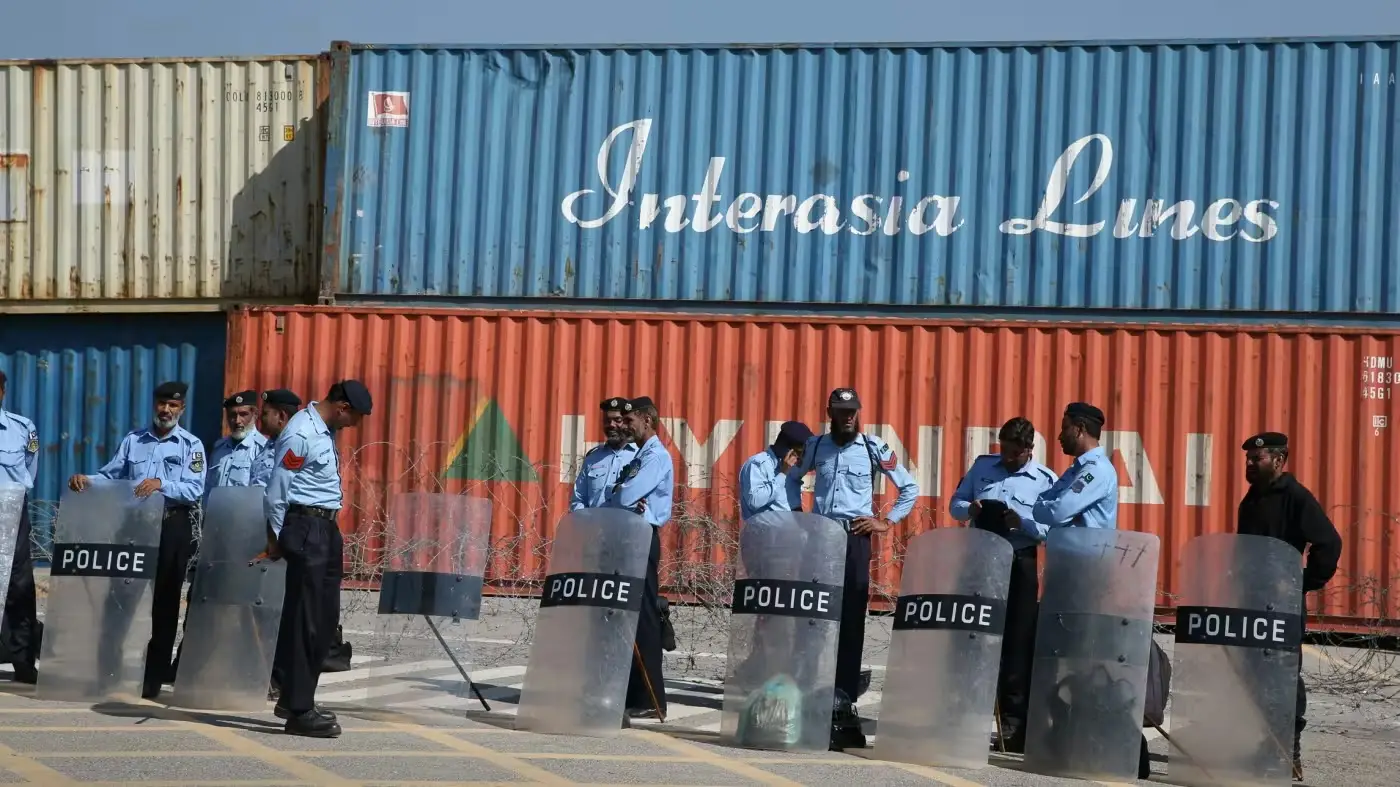For months, Islamabad has been transformed into a labyrinth of shipping containers, earning it the moniker “Containeristan.”
These metal behemoths, originally intended for cargo, now serve as barricades, blocking roads and stifling the city’s pulse. The government’s strategy to curb protests and secure the capital has inadvertently turned Islamabad into a makeshift shipyard, much to the chagrin of its residents.
In February, a coalition government assumed power with military backing. Despite the Pakistan Tehreek-e-Insaf (PTI) party, led by the incarcerated former Prime Minister Imran Khan, securing more seats, they were sidelined by traditional ruling parties. This political manoeuvring ignited fierce opposition, with supporters of Khan taking to the streets. In October, thousands marched towards the capital, prompting authorities to deploy hundreds of shipping containers to block major roads, dig trenches on intercity motorways, and cut off mobile and internet services.
The repercussions were immediate and severe. Traffic ground to a halt, commuters were stranded, and daily life was disrupted. The once serene city, nestled in the Himalayan foothills, now resembled a besieged fortress. Residents, accustomed to a peaceful environment, found themselves navigating a maze of metal barriers, with businesses shuttered and essential services disrupted.
This heavy-handed approach has drawn criticism from various quarters. Arifa Noor, a local television anchor and political commentator, remarked, “We never evolved to figure out how a government, or politicians, are supposed to engage with the population in a democratic way, so we rely on laws and methods designed to crush and control dissent.”
The government’s justification for these measures is twofold: to prevent protests and to ensure security during visits from foreign dignitaries. However, this strategy has backfired, portraying the nation as unstable and insecure. Maleeha Lodhi, a former Pakistani … , observed, “The containers aim to contain protests, … .”
The frequent lockdowns have also taken a toll on the economy. Businesses are forced to close, supply chains are disrupted, and the daily wage earners bear the brunt of these shutdowns. The image of Islamabad, once a symbol of progress and development, is now overshadowed by towering containers and barricades.
“The containers aim to contain protests, … .” — Maleeha Lodhi
In conclusion, while the government’s intent to maintain order and security is understandable, the method of turning the capital into “Containeristan” has proven counterproductive. It has not only disrupted the lives of ordinary citizens but also tarnished the nation’s image on the global stage. A more balanced approach, one that respects democratic rights while ensuring security, is imperative for Pakistan’s progress.









